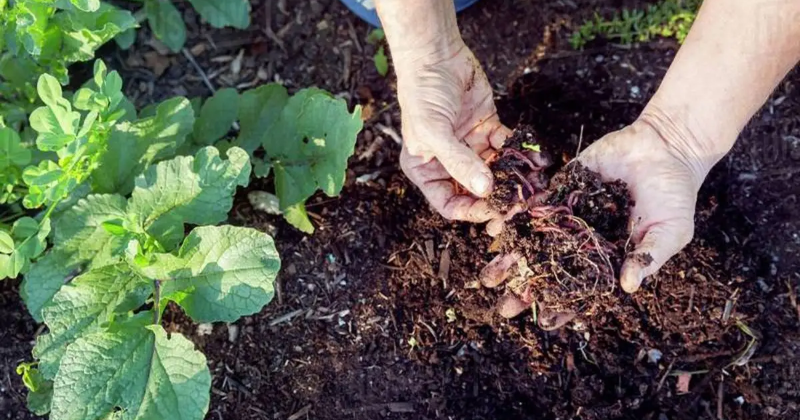Vermicomposting is a natural process that involves the decomposition of organic waste materials using earthworms. It is a type of composting that harnesses the digestive capabilities of specific earthworm species to break down organic matter into nutrient-rich vermicompost or worm castings.
The process of vermicomposting begins with the selection of suitable earthworm species, typically redworms (Eisenia fetida) or red wigglers (Lumbricus rubellus). These worms are well-adapted to thrive in organic waste environments and have voracious appetites for decaying plant material.
To start vermicomposting, a container or worm bin is prepared. The bin should be spacious enough to accommodate the volume of organic waste generated. It should have proper drainage holes to prevent excess moisture buildup.
Next, a bedding material is added to the bin. Common bedding materials include shredded newspaper, cardboard, coconut coir, or a mixture of these materials. The bedding provides a comfortable habitat for the worms and helps maintain moisture levels.

Unsplash/Representational Image
Once the bedding is prepared, the worms are introduced into the bin. The worms gradually acclimate to their new environment and begin feeding on the organic waste.
Organic waste materials suitable for vermicomposting include fruit and vegetable scraps, coffee grounds, tea leaves, crushed eggshells, yard waste (such as leaves and grass clippings), and small amounts of paper or cardboard. It’s important to avoid adding meat, dairy products, oily foods, and pet waste, as these can attract pests or produce unpleasant odors.
The worms consume the organic waste, breaking it down through a combination of mechanical and enzymatic digestion. As they feed, the worms excrete nutrient-rich castings, which are expelled from their bodies.
The vermicompost, or worm castings, produced in the process are highly valuable as a soil amendment. Vermicompost is rich in essential plant nutrients, beneficial microorganisms, and organic matter. It improves soil structure, enhances moisture retention, promotes healthy plant growth, and suppresses certain plant diseases.
To harvest the vermicompost, a method called “worm migration” is often used. One side of the bin is left undisturbed while fresh bedding and organic waste are added to the other side. The worms gradually migrate towards the new food source, allowing the harvested vermicompost to be easily collected from the side they abandoned.
Vermicomposting offers numerous benefits. It reduces the amount of organic waste that ends up in landfills, helping to minimize greenhouse gas emissions. It also provides a sustainable and cost-effective method for producing nutrient-rich compost for gardens, potted plants, and agricultural applications.
Additionally, vermicomposting can be practiced on a small scale, making it suitable for home composting systems, community gardens, schools, and urban environments with limited space. It is a low-maintenance process that requires periodic monitoring of moisture levels, temperature, and the addition of organic waste.
In conclusion, vermicomposting is a natural and efficient way to convert organic waste into nutrient-rich compost using earthworms. It offers multiple environmental and agricultural benefits, including waste reduction, soil enrichment, and sustainable gardening practices. By harnessing the power of earthworms, vermicomposting provides a sustainable solution for recycling organic materials and promoting healthy soil ecosystems.


